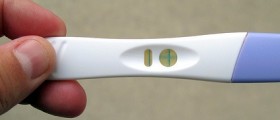
The luteal phase of the menstrual cycle sits in the time between ovulation and the start of the next menses. Luteal phase defect (LPD) is a frequent but misunderstood condition that regularly affects womens fertility.
LPD is a malfunction of the uterine lining to be in the right phase at the correct time. given that embryo implantation is highly reliant on the condition of the lining, LPD can time and again obstruct with a woman's capability to get pregnant successfully.
A Normal Menstrual Cycle
In a perfect cycle, the body embarks on the production of a follicle stimulating hormone (FSH) numerous days after the start of menses. The boosted levels of FSH effect in the arrangement of a mature egg-containing follicle on one of the ovaries. When the follicle has sufficiently grown-up, a rush of luteinizing hormone (LH) is triggered. This surge carry’s out 2 interrelated purposes; firstly It helps the follicle to burst and free the egg into the fallopian tube, this is where fertilization should happen. Secondly the follicle starts to replenish after bursting, the enhanced levels of LH cause the fluid inside the follicles to change into a thick, yellow coloured substance.
A Cycle with LPD
A usual cycle can be disturbed in more than a few places. 3 causes of LPD comprise of poor follicle manufacturing, premature termination of the corpus luteum, and breakdown of the uterine lining to react to normal levels of progesterone.
Poor follicle production is in the first half of the cycle. The body may not create a standard level of FSH, or the ovaries do not act in response strongly to the FSH, which will lead to insufficient follicle development. Since the follicle eventually becomes the corpus luteum, deprived follicle formation leads to poor corpus luteum excellence. in sequence, a poor corpus luteum will create inadequate progesterone, causing the uterine lining to be sufficiently prepared for the implantation of a fertilized embryo.
Diagnosis and Treatment of Luteal Phase Deficiency
Progesterone is the mainly accountable for the increase in basal body temperature throughout the luteal phase.
Once a analysis of LPD is suspected, a serum progesterone examination will be performed at approximately seven days after ovulation. A level fewer than 14 ng/ml indicates that progesterone production in the luteal phase is inadequate.
If the progesterone levels are low, often the urge is to "treat the symptom" by giving the patient progesterone supplementation during the luteal phase. In the case of not enough corpus luteum performance, progesterone support may be the suitable solution. However, inadequate follicle development may also be causing the low progesterone levels. Meaning, it is significant to measure midcycle follicle size and estradiol level.
















Your thoughts on this
Loading...